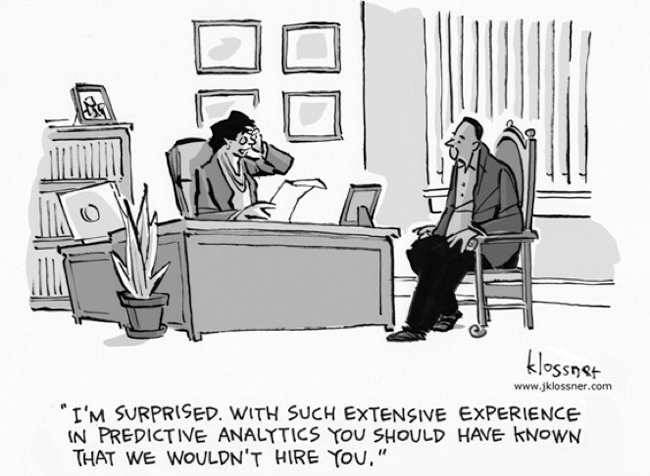Predictive Analytics: The privacy pickle
- by 7wData

Hewlett-Packard (HP) knows there are two sides to every coin. The company has achieved new power by predicting employee behavior, a profitable practice that may raise eyebrows among some of its staff. HP tags its more than 330,000 workers with a so-called Flight Risk score. This simple number foretells whether each individual is likely to leave his or her job.
With the advent of predictive analytics, organizations gain power by predicting potent yet – in some cases – sensitive insights about individuals. These predictions are derived from existing data, almost as if creating new information out of thin air. Examples include HP inferring an employee’s intent to resign, retailer Target deducing a customer’s pregnancy, and law enforcement in Oregon and Pennsylvania foretelling a convict’s future repeat offense.
By predicting which of its staff are likely to leave, HP can focus its efforts on retaining them, thereby reducing the high cost associated with finding and training replacements. Managers “drive decisions with the support of the [predictive] report and the story it tells for each of their employees,” says Gitali Halder, who leads this prediction project’s team at HP and holds a master’s in economics from the University of Delhi.
HP credits its capacity to predict with helping decrease its workforce turnover rate for a specialized team that provides support for calculating and managing the compensation of salespeople globally. The roughly 300-member team’s turnover rates, which were a relatively high 20 percent in some regions, have decreased to 15 percent and continue to trend downward.
Beyond this early success, HP’s Flight Risk prediction capability promises $300 million in estimated potential savings with respect to staff replacement and productivity loss globally. The Flight Risk scores adeptly inform managers where risk lurks: the 40 percent of HP employees assigned highest scores includes 75 percent of those who will quit (almost twice that of guessing).
HP, which literally started in the proverbial garage, came in as the 27th largest employer of 2011; $127 billion in revenue places it among the top few technology companies globally.
Halder and her teammate Anindya Dey first broke this ground in 2011, mathematically scrutinizing the loyalty of each one of their 330,000 colleagues. The two crackerjack scientists, members of HP’s group of 1,700 analytics workers in Bangalore, built this prognostic capability with predictive analytics, technology that learns from the experience encoded in big data to form predictive scores for individual workers, customers, patients or voters.
To prepare learning material, they pulled together two years of employee data such as salaries, raises, job ratings and job rotations. Then they tacked on, for each employee record, whether the person had quit. Compiled in this form, the data served to train a Flight Risk detector that recognizes combinations of factors characteristic to likely HP defectors. The results surprised Halder and Dey, revealing that promotions are not always a good thing. While promotions decrease Flight Risk across HP as a whole, the effect is reversed within the sales compensation team: Those promoted more times are more likely to quit, unless they have also experienced a more significant pay hike.
The analysis confirmed that Flight Risk also depends on things one might expect. Employees with higher salaries, more raises and increased performance ratings are less prone to quit. Job rotations also keep employees on board by introducing change, given the rote, transactional nature of some compensation staff activities.
HP’s newfound power brings with it a newfound threat in the eyes of some employees. A novel element is emerging within staff records: speculative data. Beyond standard personal and financial data about employees, this introduces an estimation of future behavior, and so speaks to the heart, mind and intentions of the employee.
[Social9_Share class=”s9-widget-wrapper”]
Upcoming Events
Evolving Your Data Architecture for Trustworthy Generative AI
18 April 2024
5 PM CET – 6 PM CET
Read MoreShift Difficult Problems Left with Graph Analysis on Streaming Data
29 April 2024
12 PM ET – 1 PM ET
Read More




